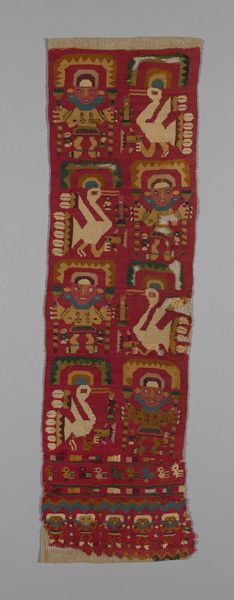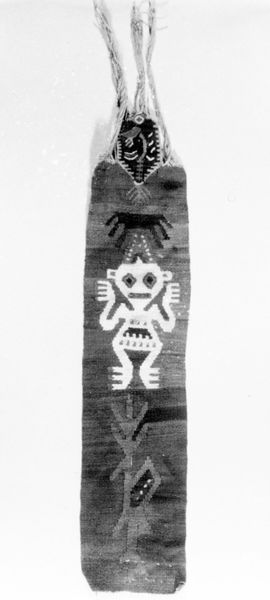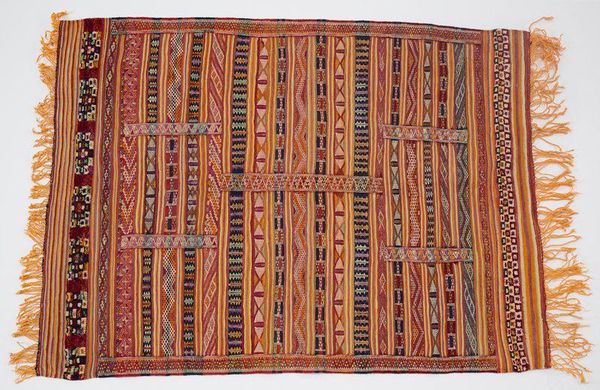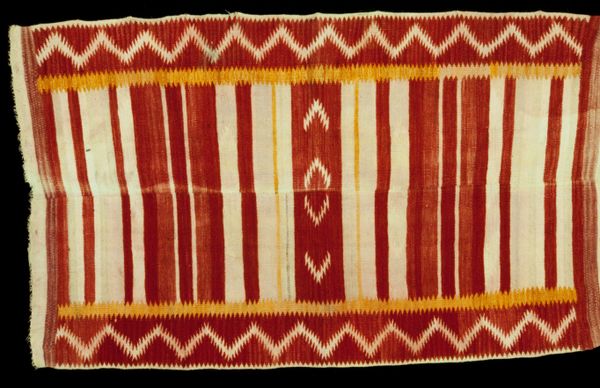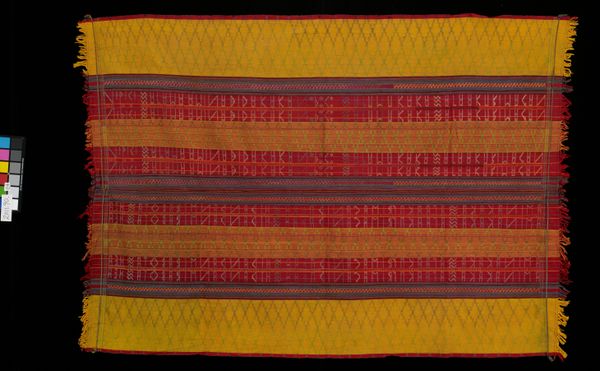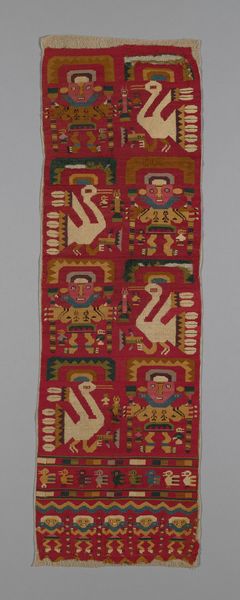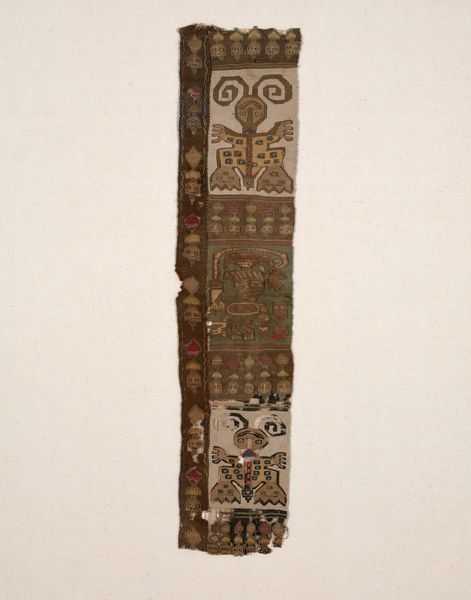
fibre-art, textile
#
fibre-art
#
textile
#
geometric
#
decorative-art
#
indigenous-americas
Dimensions: a: 30.8 × 4.1 cm (12 1/8 × 1 5/8 in.) b: 28.9 × 4.1 cm (11 3/8 × 1 5/8 in.) c: 29.2 × 4.1 cm (11 1/2 × 1 5/8 in.)
Copyright: Public Domain
Editor: So, this is "Fragments (Border)," a textile piece from the Nazca culture, dating roughly between 100 and 200 AD. It’s really striking; there's a surprising sense of energy in these interwoven geometric patterns, despite its age. What’s your interpretation of a piece like this, especially considering its historical context? Curator: As a historian, what I immediately see is the cultural significance embedded within this textile. These aren’t just decorative motifs, they were politically charged and crucial for societal structure. These Nazca textiles were often grave goods, reflecting status and beliefs about the afterlife. Do you notice how these repeating geometric patterns suggest a codified language of some sort? Editor: That's a really interesting point. I hadn’t considered it as a language. So, its function was partly determined by beliefs about death? Curator: Absolutely. Grave goods in many cultures reflect what’s valued in life and what's needed for the next phase, or a mirror of socio-political order of the time. These complex weavings required specialized skills, implying social hierarchies. These patterns might communicate lineage, power, or specific narratives central to Nazca identity. Consider also how its preservation and later display in a museum affect its original meaning, potentially silencing indigenous voices. Editor: Wow, I’d never thought about the modern exhibition erasing parts of its story. Given your perspective, what do you consider the most important element when analyzing art from a past civilization? Curator: The intersection of power, belief systems, and visual representation. We must examine how these objects functioned within their society and how our interpretation is shaped by our own socio-political environment. A textile, like this, can unlock vast stores of cultural data. Editor: This has really broadened my perspective on art interpretation. I'll definitely approach ancient art with these layers in mind now. Curator: And I will remember the raw visual power and energy that strikes viewers like you. It is a balance.
Comments
No comments
Be the first to comment and join the conversation on the ultimate creative platform.
